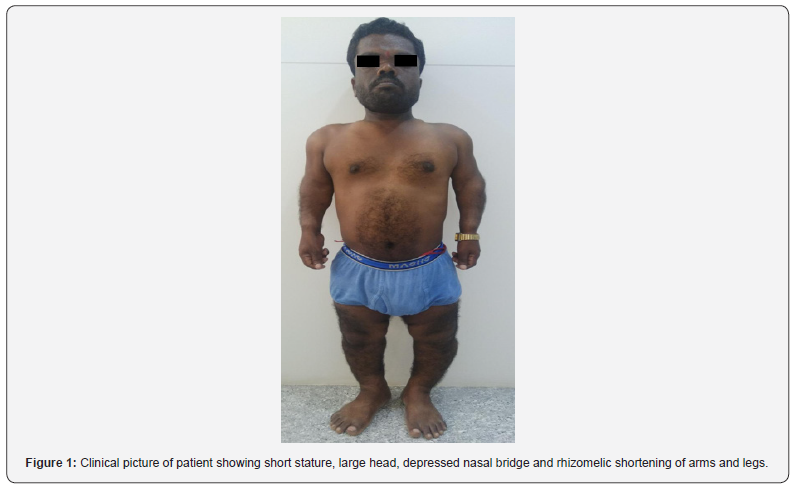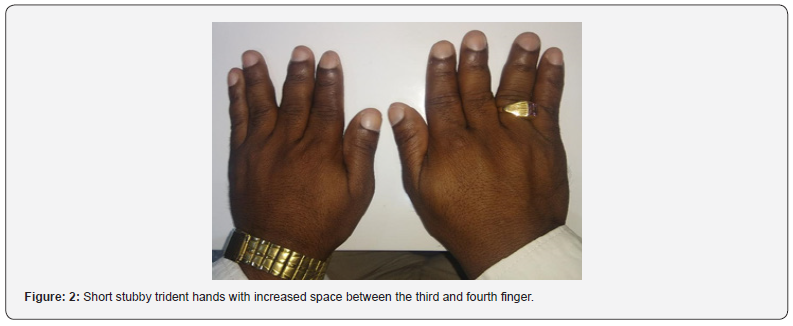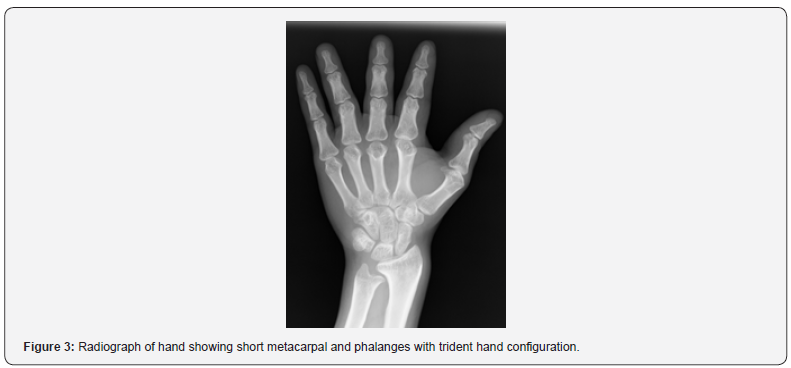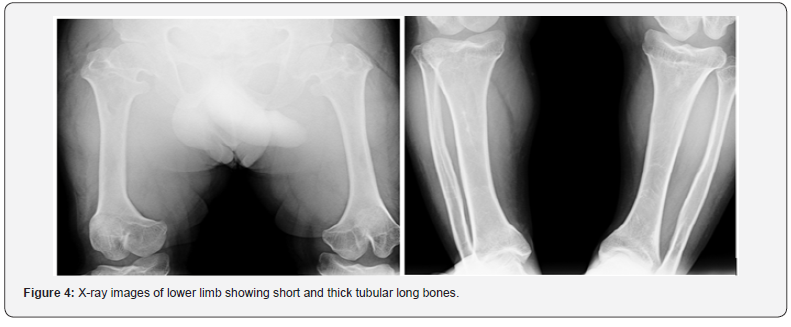Trident Hand: Achondroplasia
Chaitanya Yerawar1*, Dileep Punde2, Aditi Pandit1 and Prerana Deokar3
1Department of Endocrinology, Shree Narayana Institute of Medical Superspeciality, India
2Punde Hospital, India
3Department of Biochemistry, Shree Narayana Institute of Medical Superspeciality, India
Submission: October 10, 2020; Published: November 24, 2020
*Corresponding author:Chaitanya Yerawar, Department of Endocrinology, Shree Narayana Institute of Medical Superspeciality, Nanded, India
How to cite this article:Chaitanya Y, Dileep P, Aditi P, Prerana D. Trident Hand: Achondroplasia. J Endocrinol Thyroid Res. 2020; 5(5): 555672.DOI: 10.19080/JETR.2020.05.555672
Opinion
Achondroplasia is the most frequent form of short - limb dwarfism [1]. The phenotype is characterized by rhizomelic disproportionate short stature, enlarged head, midface hypoplasia, short hands and lordotic lumbar spine [2,3]. Its incidence is 1 in 10,000 to 1 in 30,000 [1]. Here we describe a case of achondroplasia in a 37-year-old male, who presented to endocrinology OPD for short stature. General physical examination showed large head, depressed nasal bridge short stature, with rhizomelic shortening of the arms and legs and normal trunk length (Figure 1). Patient had short, stubby fingers and excessive spacing between third and fourth finger (Figure 2). Anthropometry revealed a height of 115.5 cm (midparental height - 155.2 cm), weight of 41.4 kg. His vital signs were within the normal limits. Systemic examination did not reveal any abnormality. Hand‑wrist radiograph showed short metacarpal and phalanges with trident hand configuration (Figure 3). X ray of lower limb reveled short and thick tubular long bones (Figure 4). Based on clinical examination and radiological features; diagnosis of achondroplasia was confirmed.




References
- Shah GS, Shrivastava MK, Shah D, Gupta N (2011) Achondroplasia: Case Report and Review of Literature. Journal of Nepal Paediatric Society 31(3):224-226.
- Genevieve Baujat, Laurence Legeai-Mallet, Georges Finidori, Valerie Cormier-Daire, Martine Le Merrer (2008) Achondroplasia. Best Practice & Research Clinical Rheumatology 22(1): 3-18.
- Richette P, Bardin T, Stheneur C (2008)Achondroplasia: from genotype to phenotype. Joint Bone Spine75(2):125-130.






























